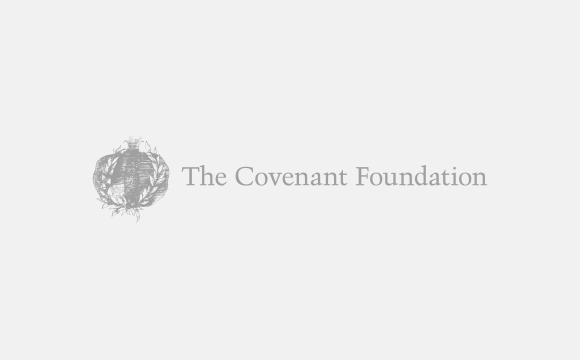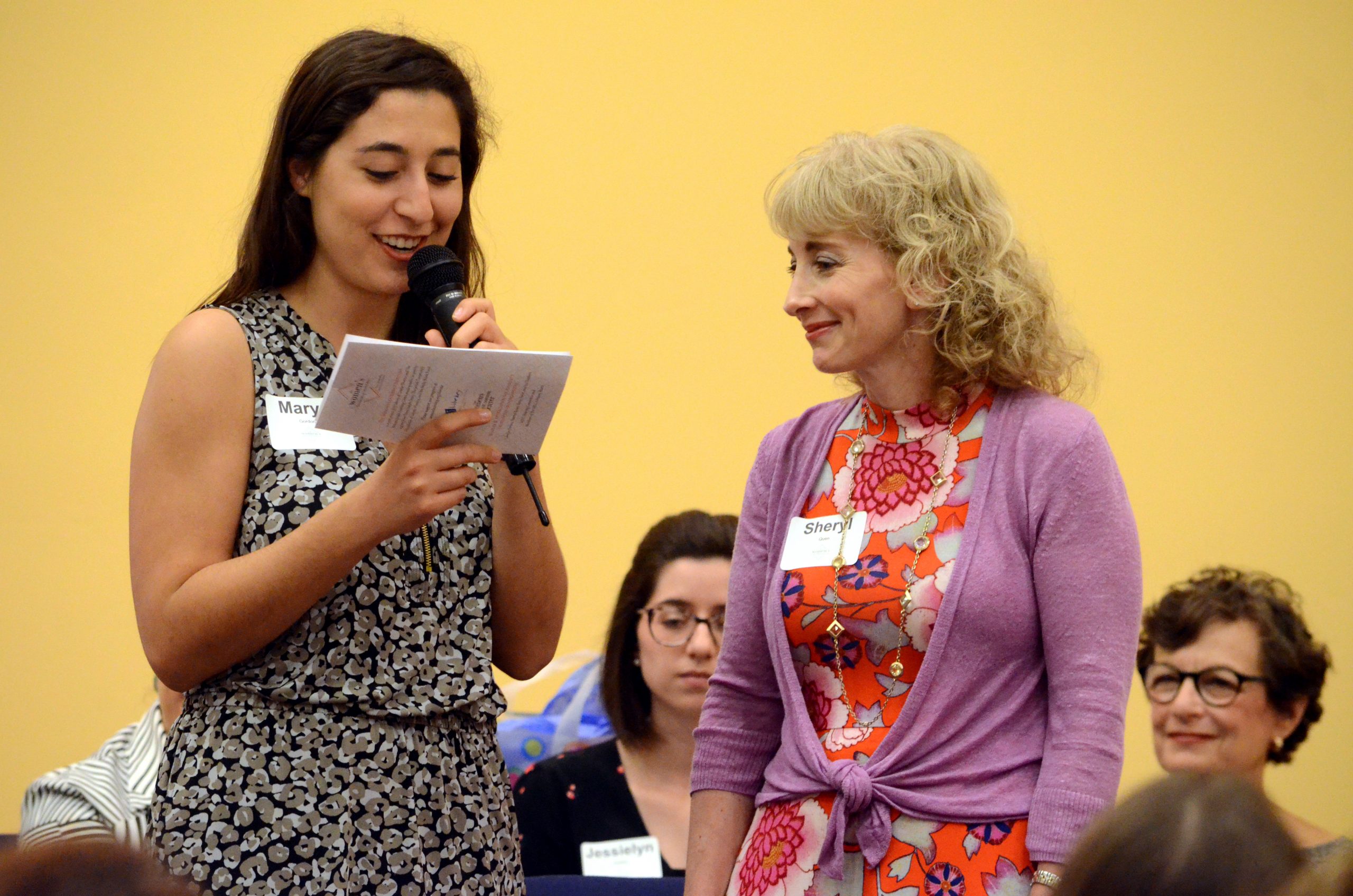Silent Role Models No More
This is Women’s History Month and in honor of that, the JCC has seen fit to display the latest creations of students of the nearby Weber Jewish Community High School, who have designed dresses reflecting the long and splendid lives of Jewish senior women they’ve come to know, admire, and even love.
“People cannot just walk by these dresses,” said Barbara Rosenblit, who teaches humanities and Judaic studies at The Weber School, and whose popular class on Jewish women in modern America is the laboratory for their creation. “People stop. They stare. They absorb. And they learn about ordinary women through a powerful, compelling visual metaphor of their lives.”
This is a unique initiative to say the least, and one that is multi-dimensional in form and effect. For three years running now, Rosenblit – a 2004 Covenant Award recipient – has led her students on a most extraordinary journey through the lives of Jewish women who have lived the last century not in the headlines, but in the day to day, making small impacts that loom large by example and inspiration.
Based on the practice of oral histories, juniors and seniors produce not a book, not an audio recording. They create the front of a dress, large on canvas, and drawn, designed, textured, decorated, and styled to reflect their interpretation of a life four or five times the length of their own.
For Anna Perling, who was a junior when she took the class in 2008, this meant getting to know nonagenarian Sarah Berlin, a lifelong Atlanta resident who lived through most of a tumultuous century teaching third-graders, volunteering for the Red Cross during the Second World War, and working at the hospital at Emory University, all while raising three sons and driving around town in her beloved Pontiac.
The dress that she created is textured with 1950’s patterns, vintage buttons, and pictures, curled around the edges, capturing the 90-plus years of her new friend’s life. One of these shows Berlin as a young camp counselor, one of her charges being a young girl that is Perling’s own grandmother, a connection unknown to either of them until they examined the image together.
“I don’t think that I had that much of an interesting life,” Berlin said. “But what she saw, and how she expressed it, is truly beautiful and incredibly meaningful to me.”
But for Perling, the richness and meaningfulness of Berlin’s life – the first 90-plus years of it, that is – is significant.
“My two grandmothers have passed away,” she said. “Getting to know Sarah was such a deep experience and gave me a perspective. It taught me about living a life and aging with great dignity, with perseverance and independence. This is how I want to be. Age is just a number. Sarah embodies that.”
Perling’s dress is just one of 82 created by students since 2007, when Rosenblit, along with Sheila Miller, art educator at The Weber School, launched the project, called adDRESSING women’s lives.
It builds on In Our Own Voices: A Guide to Conducting Life History Interviews with American Jewish Women, developed by the Jewish Women’s Archive to help students become oral historians. JWA, a grantee organization of The Covenant Foundation, has recognized and broadcast the initiative as a “best practice,” worthy of replication elsewhere.
“The notion of a dress is so rich,” Rosenblit said. “There is a grandeur and a size that suits these women and their lives, and the form of a dress provides a wonderful canvas for tremendous innovation, understanding, interpretation and creativity.”
Miller agreed, describing the dress form as a “metaphor for the multifaceted role of women in family and society.”
“By incorporating an art studio element with a humanities class, Barbara and I have created a lasting experiential component to learning that leaves an indelible mark on both students and seniors alike,” she said.
Melanie Oppenheimer, a senior who took the women’s history class in the fall, interviewed and befriended Sylvia Schwartz, an 86-year-old Atlanta resident who for more than three decades worked as an educator and was instrumental in mainstreaming special needs children into the classroom.
Oppenheimer created a multi-colored pastel dress, with lettering and words describing her impressions of Schwartz’s life of educational impact, community involvement, love of family and devotion to friends.
Schwartz, like many of the other senior women, does not necessarily feel that her life was deserving of such recognition. “I feel like I was doing my job and just doing what I loved to do,” she said.
Oppenheimer, of course, saw it differently.
“There is so much to learn from her, about how she lived her life and had an impact she may not even see,” Oppenheimer said. “But no impact is small. These women don’t have to donate money or build skyscrapers to be role models. Sylvia is certainly a role model for me, and I hope to be her friend and learn from her for many, many years.”
Juniors and seniors in high school don’t naturally enter the history project with any great enthusiasm, Rosenblit noted, as they exist mainly in the here and now and don’t necessarily relate to those decades older than themselves. But, she said, that all soon changes.
“At the beginning, this is just an assignment to them,” she said. “But after it starts, there begins a transformation, as they begin to appreciate, and be wowed by these long lives of quiet accomplishment. And as they interpret and create, they begin to realize what it means for the next stages of their own lives.”
Still too, these women are the quiet heroes within Jewish women’s history, the ones whose names are not mentioned or boldfaced within textbooks. And this makes them immensely interesting and worthy of recognition, students said.
“These are real people who we have met, who we can see as our own grandparents, and who can teach us about how they have approached life,” Perling said. “This small recognition of them and what they have accomplished is the least we can do for them in light of all they have done for us by way of inspiration and example.”
— By H. Glenn Rosenkrantz, for The Covenant Foundation




